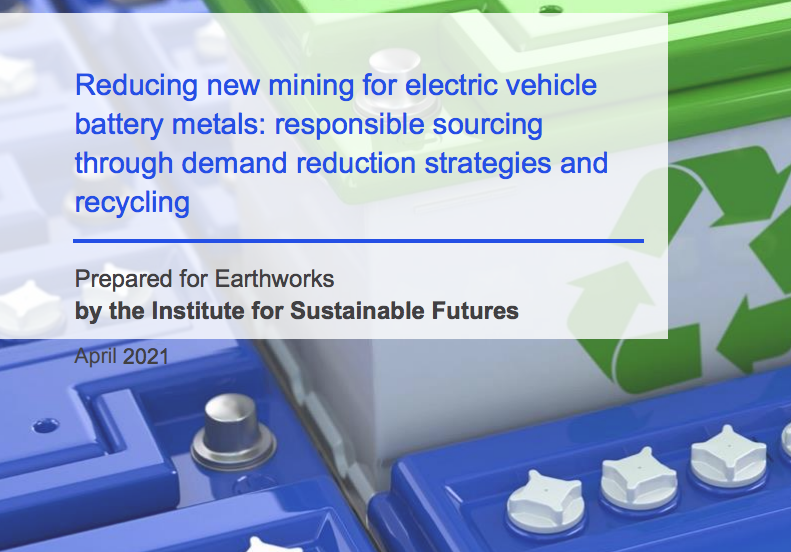Report looks at recycling of battery metals to meet rising demand



A new report suggests that recycled metals could meet a significant part of the rising demand from electric vehicles (EVs), decreasing some of the need for new mine supply.
The report, Reducing new mining for electric vehicle battery metals, was prepared by the University of Technology Sydney's Institute for Sustainable Futures for Earthworks – an environmental non-profit organization. It focused on cobalt, lithium, nickel and copper – all key lithium-ion battery ingredients.
The report suggests that recycling has the potential to reduce primary (mined) demand compared to total demand of lithium by 25%, of cobalt and nickel by 35% and of copper by 55% in 2040.
In the general end market, current recycling rates vary from less than 1% for lithium to around 68% for cobalt and nickel. However, much of this market is focused on recycling materials for the same use rather than for the lithium-ion battery market. In the general end market, recycling of lithium – which is also the battery metal with the fastest projected rate of demand growth (14.6% per year through to 2025) – is extremely low because recovery is both difficult and uneconomic.
Metal recovery from recycling of lithium-ion batteries varies from 10% for copper to 80% for cobalt.
While current lithium-ion battery recycling processes focus on cobalt and nickel, recovery of which is most economic, the report notes that recovery rates of over 90% are feasible for all four metals.
Current practices, however, are not able to recover some materials at a suitable quality for manufacturing new batteries.
New recycling processes are being developed, driven by manufacturer, government and consumer concerns about management of spent lithium-ion batteries. Only a small number of lithium-ion EV batteries have reached their end of life (estimated at 150,000 in 2020) so far.
However, with economic incentives and the right policy requirements, the report finds that between 25-55% of projected demand for EV batteries over the next two decades could be offset by optimizing battery metal recovery.
Policies for collection of spent EV batteries (such as currently exist for lead-acid batteries), standardization of lithium-ion batteries to enable recycling, and standards for performance and durability of first and second life EV batteries would all provide a boost to lithium-ion battery recycling.
The report notes that recycling alone will not be enough to meet the projected rate of growth in demand for battery metals and also suggests that extension of battery life beyond the current estimates of 8-15 years and reuse of batteries in “second life applications” have potential to reduce demand of mined materials. In addition, it suggests enacting policies that boost public transportation and “disincentivize” private car ownership.
Read the full report on Earthworks' website.
Comments
Robert Schafer
This is based on today’s demand for these metals. An electronic society is going to require as much as 100% or more increase in demand for many of these metals compared to today’s requirements. So efficient recycling may meet 25-50% of demand at today’s levels, the total demand in 25-50 years annually requires significant increases in base level supply side for the metals, which requires a significant increase in mining above today’s rates. Recycling at the future rates of supply at demand can then approach a new market equilibrium at the future level.